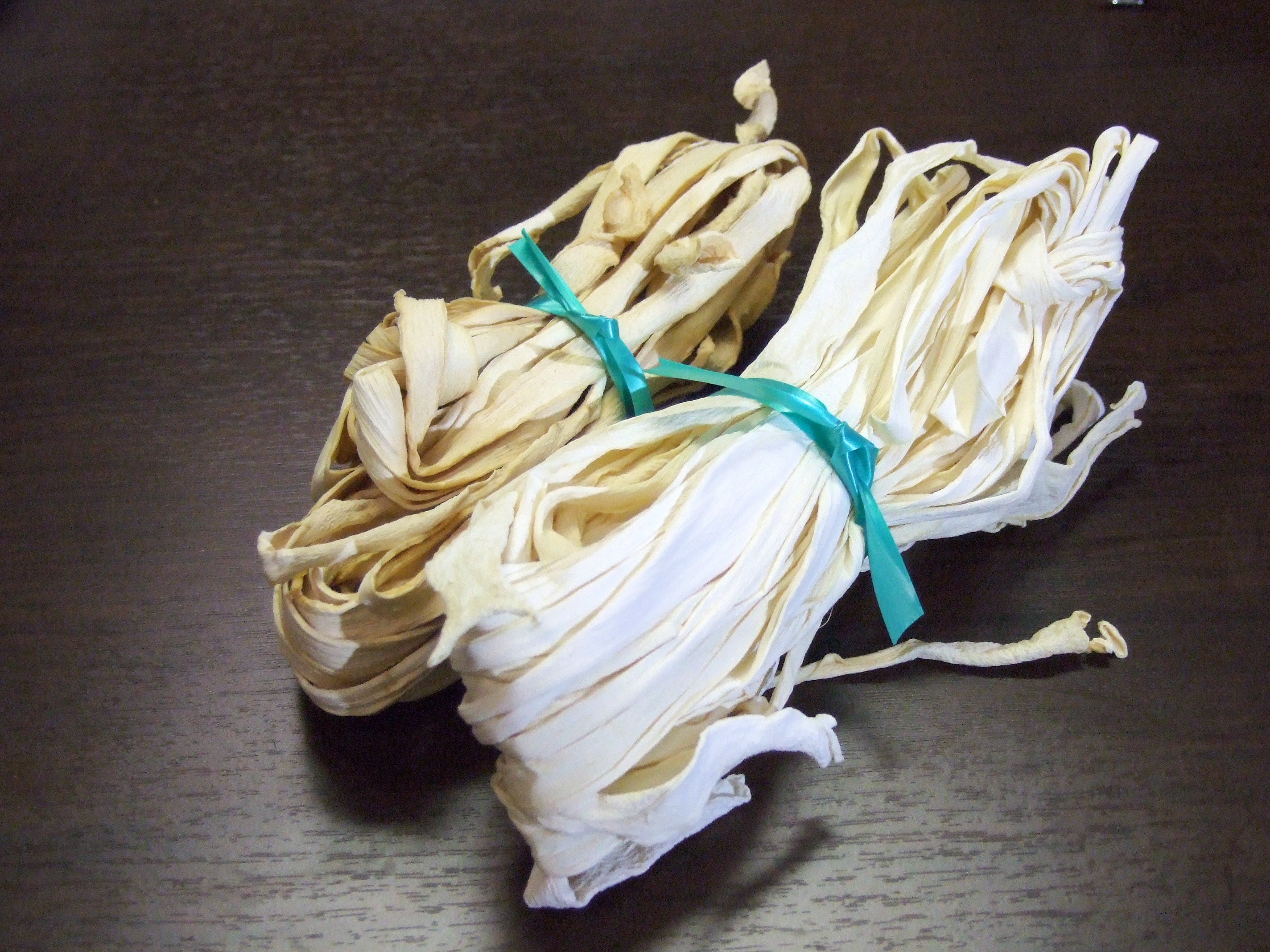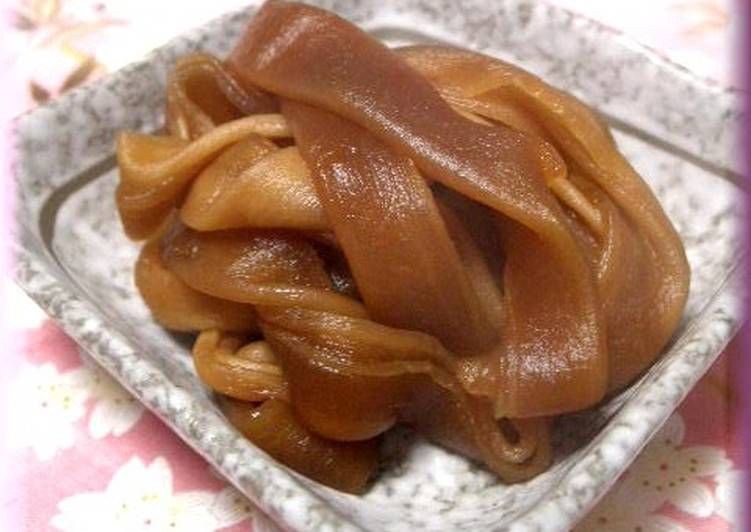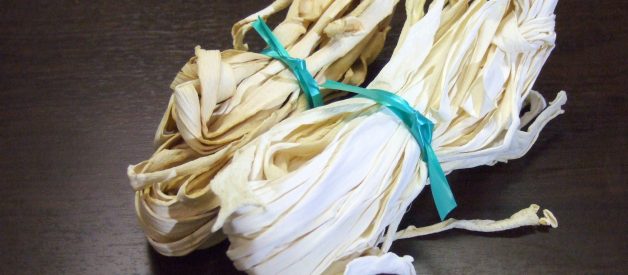What is Kampyo

Kampyo are dried gourd strips from the gourd calabash and is a common ingredient found in sushi. Further along is very efficient for balancing out the fishy/ocean scent from eating too much sushi.
Besides, Kampyo can be found in markets all over the world, and is often in its dehydrated form. Hence it needs to be soaked with warm water for a period of time before being used for cooking.
When you buy them in the market, they usually are in strips that are long and thin. Also most of the gourd strips arrive from tropical regions in Asia or Japan.
But the harvesting process for these gourd shavings is not simple. Since they need an environment where the soil is light and with good water drainage.
Although the images of them may seem small, their vines will grow as tall as 20 meters. And their bodies weigh from 13 to 15 pounds. So it?s not just as food, but there are traditions where the dry gourds are used as containers.
During the Edo periods in Japan, the gourds were viewed as foods for the upper class. Making the Kampyo an important part of history and Japanese tradition for over three hundred years.
Furthermore the area which accounts for 98% of its production is in Tochigi prefecture. Where the territory is mostly of volcanic ashes. Hence more water retention and soil drainage, in addition to the frequent heavy rains.
Finally when it?s time to harvest and import them. The farmers would peel the skin of the gourds to be then hung over bamboo poles indoors. Thus allow it to dry and become the dehydrated form that?s sold.
What Does Kampyo Taste Like?

This valued gourd has a very delicious sweet and uniquely savory flavor. Additionally it is very soft and fibrous, with a mild chewy tangy texture
But it is often not eaten by itself, but in Japanese cuisine is flavored with broth, sugar, Mirin, soy sauce, and other ingredients from the recipe.
Furthermore their unique taste is often used in Japanese cuisine recipes. Foods like Nimono which is a simmered Japanese dish or Aemono a marinated food salad.
However the sliced strips of Kampyo are better at absorbing the taste of the seasoning like sugar and etc. Hence making it great for being used for making Futomaki or Kampyo roll where it can absorb the taste of the vinegar sushi rice.
Kampyo Health Benefits
Firstly there?s 70 calories in 1 cup of Kampyo and its most abundant source of nutrient is iron, zinc, and vitamin B5. However, in terms of content it is most rich in fiber, which stands out as 30 grams per 100 grams of dried gourd.
Besides that it also has tons of potassium which is very beneficial for controlling blood pressure and balancing your electrolytes. And containing as much as 1800mg of potassium per 100g of Kampyo strips.
Additionally it has an important source of manganese, and deficiency of manganese can slow down height growth as well cause skeletal abnormalities. With Kampyo able to 54% of the necessary supply of manganese in 100 grams.
What is Kampyo Roll?
Firstly this sushi roll is a very popular sushi roll that is often eaten for lunch. Where it wrapped similar to a tuna roll except there?s a shaved strip of dried gourd in the middle that has been soaked with soy sauce and sugar.
Besides, the kampyo roll is totally gluten free since the gourd is a vegetable. Additionally a fit for vegetarians looking for a roll that is free of meat.
Beyond just as a Kampyo roll it can be used in the Futomaki roll. Which is a general sushi roll that is made from sushi rice, soy sauce, daikon, vegetables, and cucumber.
How to Cook Kampyo for Sushi
First you want to soak the strips in water to wash it before sprinkling some salt on to the strips. Next you bring the strips into boiling for around 5?10 minutes, until it softens.
Following you drain the strips then create a mixture of 1 cup dashi(fish stock), 2?3 tablespoons of sugar, Mirin, and soy sauce. Allow the strips to simmer in the pot until the liquid becomes absorbed in the kampyo.
Here?s some information for the process:
- https://cookpad.com/us/recipes/
- https://umamimart.com/blogs/


